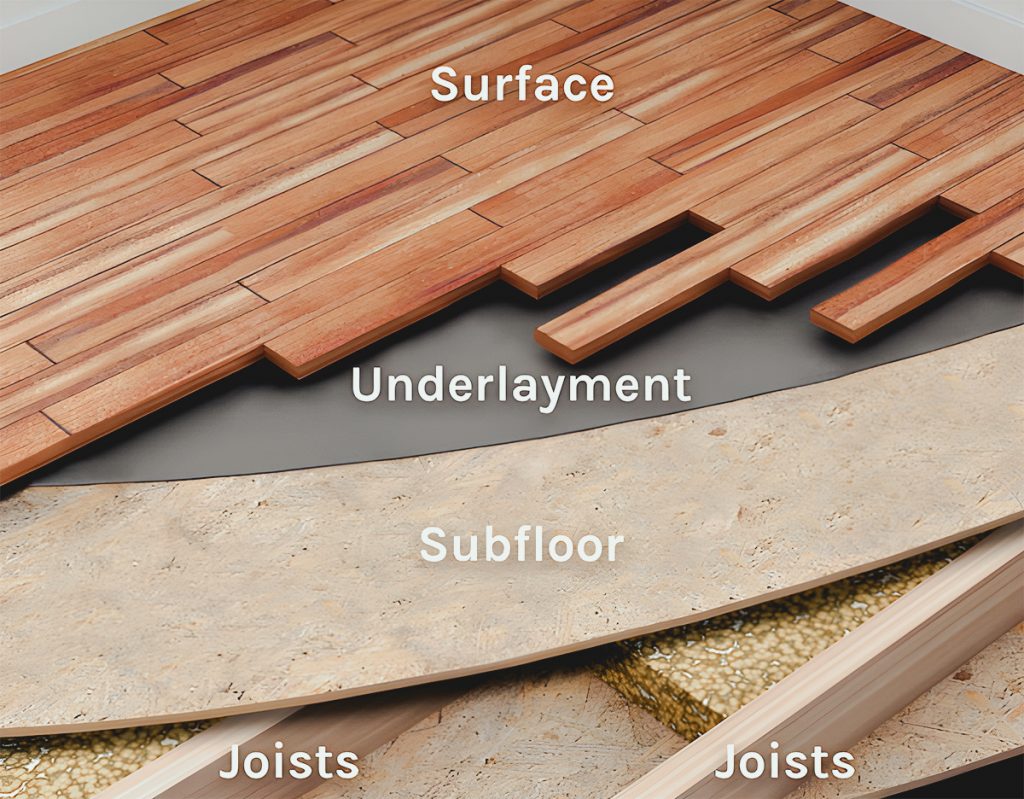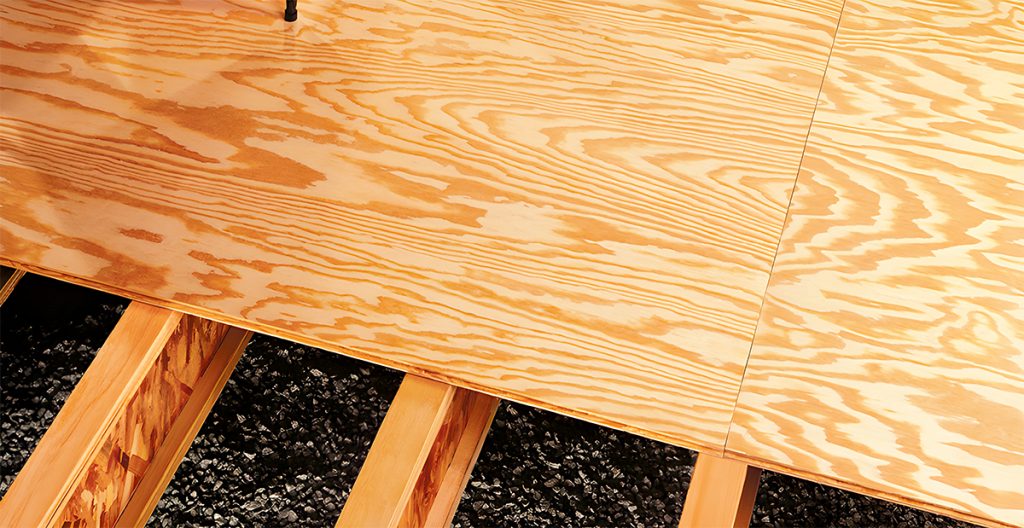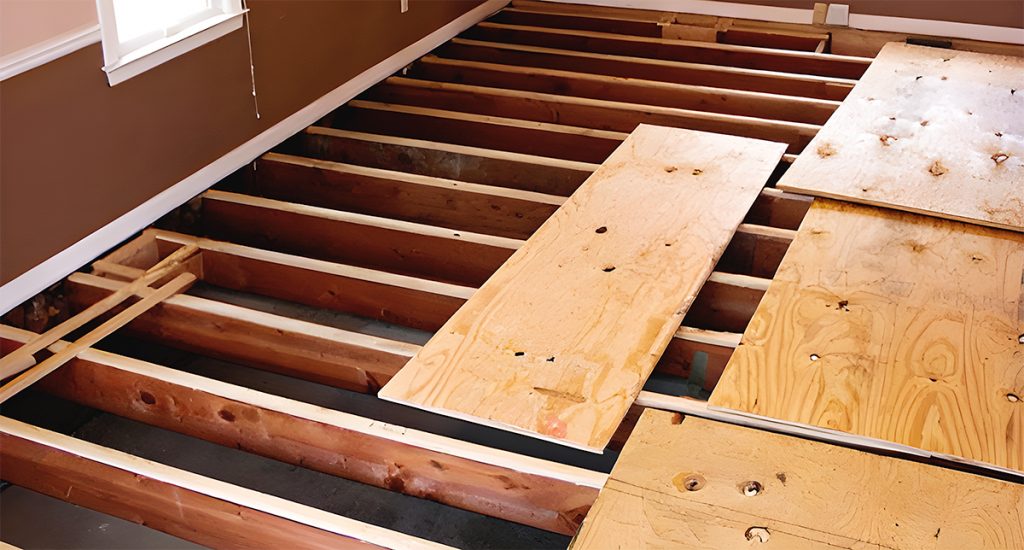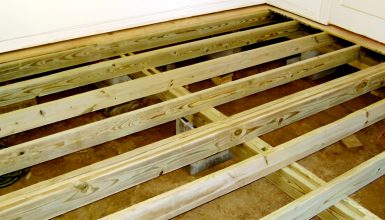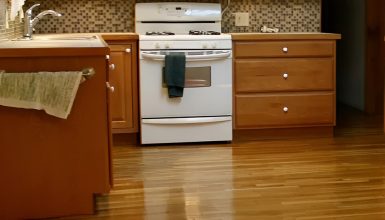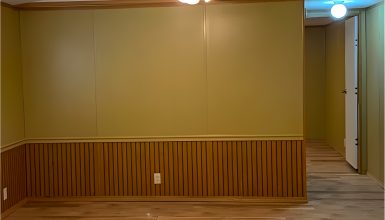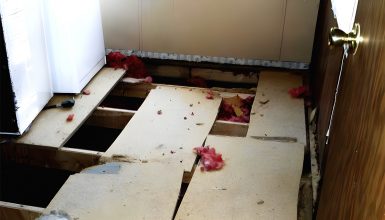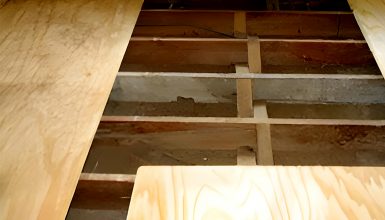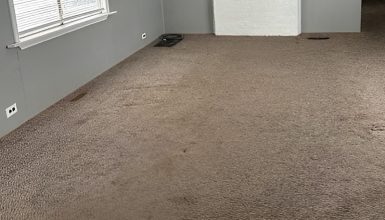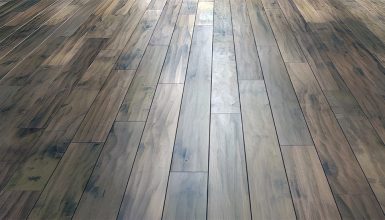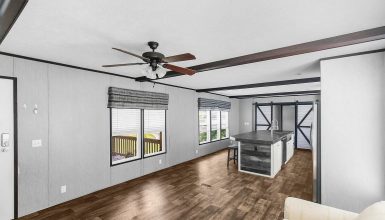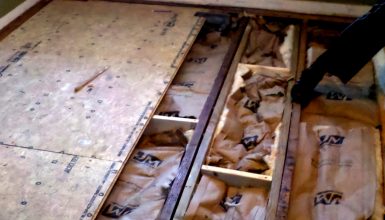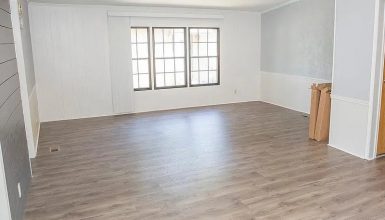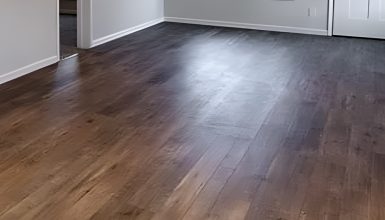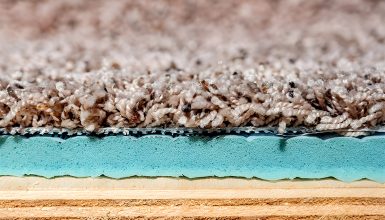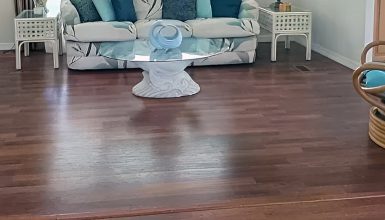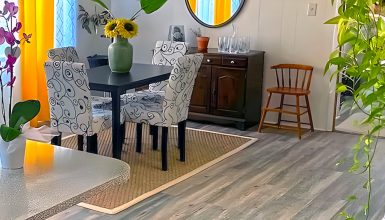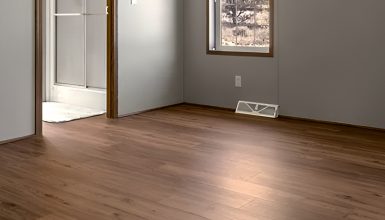Choosing the best subfloor for your mobile home is about the right fit. There’s a sweet spot between durability, insulation, and moisture protection. And remember, your subfloor has to weather all seasons and stand the test of time. So, let’s find the perfect match, the subfloor that’ll lay the groundwork for your dream mobile home.
What Is Mobile Home Subfloor
You might think a subfloor is just a hidden layer under your plush carpet or sleek laminate, but it’s much more. Picture the subfloor as the unsinkable backbone of your mobile home. This is the sturdy layer that your beautiful finished floor rests on. It’s the structural foundation that supports not just your flooring. But your furniture, appliances, and even those midnight fridge raids.
But the subfloor isn’t just about support. It plays a significant role in your home’s insulation. Ever stepped on a chilly floor first thing in the morning? Not the best start to the day, right? A quality subfloor can help you avoid those frigid surprises. It keeps the cold air out during winter and the cool air in during summer.
So, it’s all about support and insulation, but that’s not the end of the story. A subfloor acts as a barrier, too. It helps to protect your home from moisture creeping up from the ground. Ever seen a warped floor or smelled that musty scent of mold? That’s what can happen when moisture meets an ill-prepared subfloor. Ready to explore the options? Let’s dive in.
Best Subfloor Materials for Mobile Homes
Let’s tackle the main event: the top subfloor materials. Think of this as a casting call, and you’re trying to find the star of your mobile home’s floor show. Let’s meet the contenders.
1. Plywood
First up, we have Plywood. This sturdy material is like the all-rounder in your favorite sports team. It’s strong, durable, and works well in various climates. Plywood is made by gluing together thin layers of wood, making it resistant to cracking, shrinking, and warping. But, like all stars, it has its quirks. Plywood can be a bit pricey, and it can succumb to moisture if not properly sealed. But overall, it’s a dependable choice for many mobile homeowners.
2. OSB
Next in line is the Oriented Strand Board or OSB. OSB is like plywood’s cool cousin. It’s also made from glued wood, but instead of layers, it uses shredded strands, which gives it a unique look and feel. OSB is generally cheaper than plywood and has similar strength and durability. However, it’s a bit more susceptible to moisture and might not hold up as well in very humid conditions.
3. Particle Board
Third on our list is Particle Board. Imagine taking sawdust, wood shavings, and glue, giving them a good mix, and pressing them into a board. That’s particle board for you. It’s the budget-friendly pick of the lot. While it’s easy on the wallet, it might not be the most durable or moisture-resistant choice. This is one to consider if cost is your main concern, but be ready for potential replacement down the line.
Mobile Home Subfloor Thickness
The thickness of your subfloor affects two main things: strength and weight. The thicker the subfloor, the stronger it generally is. It can withstand heavy foot traffic and the weight of your appliances and furniture. Sounds perfect, right?
Well, here’s the flip side. The thicker the subfloor, the heavier it is. It might not be an issue in a regular home, but weight is a big deal in a mobile home. Every extra pound affects your home’s mobility and fuel efficiency if you’re moving it around regularly.
Typically, subfloor thickness in mobile homes ranges from 5/8″ to 3/4″. It offers a good balance of strength and weight for most situations. It’s strong enough to hold up to everyday life but not so heavy that it weighs your home down.
Factors to Consider When Choosing a Subfloor for Mobile Homes
So, you’re ready to pick the perfect subfloor. But what should you consider before making that final choice? Here’s the rundown.
- Climate and weather
First, think about your climate and weather conditions. Are you planning to set up camp on the sunny California coastline? Or does your heart lie in the icy Alaskan wilderness? If you’re in a humid area, you need a subfloor to fend off moisture like a champ. And if it’s often cold, look for materials with top-notch insulating properties to keep your toes toasty.
- Durability
Next, let’s talk about durability. Just like the trusty old rocking chair in your family for generations, your subfloor needs to be built to last. It should withstand heavy foot traffic, the weight of your furniture, and more without buckling under pressure.
- Cost
Now, onto the cost. Like all good things in life, quality subfloors have a price tag. But remember, it’s an investment. While it might be tempting to cut costs here, a cheaper option can lead to expensive repairs down the line. Balance your budget with your need for quality and durability.
- Installation
But what about installation? Some subfloors are like a 1,000-piece puzzle, complex and time-consuming. Others are more like a quick game of checkers – easy and straightforward. If you’re planning to DIY, consider the installation process. But don’t let this scare you off a great option; professional help is always available.
- Maintenance
Maintenance and cleaning are up next. Just like you wouldn’t buy a car without knowing how to take care of it, the same goes for your subfloor. Some materials are easy to maintain, while others need more TLC. Choose a subfloor that matches your lifestyle and cleaning routine.
- Insulation
Lastly, consider insulation properties. We’re not just talking about keeping your feet warm, though that’s a plus. Good insulation can save energy costs and make your mobile home more eco-friendly.
That’s it! Keep these factors in mind, and you’re on the right path to choosing the subfloor that will be the unsung hero of your mobile home.
Conclusion
The right subfloor isn’t just about the material. It’s about selecting a silent partner that supports your mobile home day in and day out. Remember, it’s your climate, your budget, and your needs that matter most in this decision. You have options, whether the all-rounder plywood, the cool cousin OSB, the budget-friendly particle board, or the tough-as-nails concrete.
FAQs
Not necessarily. While a thicker subfloor can offer more strength and insulation, it also adds to the weight of your mobile home. You’ll need to balance the benefits of thickness with the potential downsides.
It depends on your DIY skills and the material you’re working with. While some materials, like particle board or OSB, are relatively straightforward. Others, like concrete, can be a bit more complex. You might enjoy the challenge if you’re handy and have the time. But remember, there’s no harm in calling in a pro to ensure it’s done right.
The lifespan of your subfloor depends on several factors – the material you choose, the climate you live in, and how well you maintain it. Some options, like concrete or plywood, can last long if taken care of. In contrast, other materials like particle board might need replacement more frequently.
It is a solid yes, especially when dealing with wood-based materials like plywood or OSB. Sealing your subfloor adds an extra layer of protection against moisture and can significantly extend its life.
Look out for telltale signs like a spongy feel underfoot, visible mold, musty smell, or water damage. These are all signs that your subfloor may need some attention.

